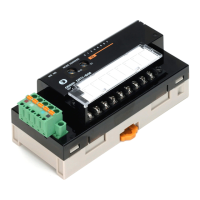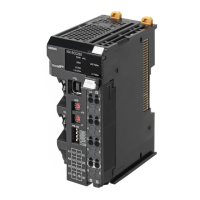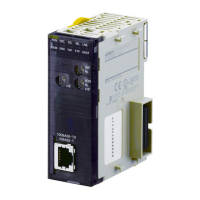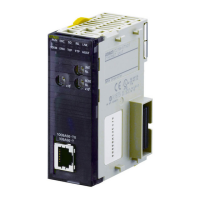156
Setup Area Allocations Section 5-2
Also, if the external device is connected using 2-wire connections from an RS-
422A/485 port, send and receive data cannot both be on the same transmis-
sion line at the same time. This will create an additional lag time, t2, or 150
µs.
If responses are being received quickly from the external device, i.e., faster
than t1 +t2, create a send delay at the external device or take other measures
to allow for the lag times.
Time Lag t1
With full-duplex mode, the reception buffer is cleared immediately before the
sequence is executed. While both the SEND&RECV commands are being
executed, data is input into the reception buffer and is used as the macro
data.
Note 1. With full-duplex, RS-232C or RS-422A/485 (1:1 and 4-wire connections)
can be used. RS-422A/485 1:N or 2-wire transmissions cannot be used.
2. The FLUSH command is used to clear the reception buffer, and can be
used at any time.
3. Although the received data is discarded until completion of SEND execu-
tion, it is reflected in the character trace.
Baud rate (bps) Time lag (µs)
1,200 1,116
2,400 578
4,800 288
9,600 144
19,200 73
38,400 36
57,600 24
SEND
operation
Data send
processing
Data cannot be received
during this time.
Rapid
response
Data
reception
Rece
tion buffer cleared
t1 t2 = 150 µs
Time lags (see following table)
Transmission
mode
Time reception
buffer cleared
Data reception Character trace Timing chart (example)
Half-duplex Immediately before
communications
sequence execution
and immediately
following SEND
completion by the
SEND or
SEND&RECV
command
From SEND
completion to
RECV
completion, or
following SEND
completion to
immediately
before SEND
execution
All during trace
execution
Full-duplex
(See note 1)
Immediately before
communications
sequence execution
(See note 2)
All during
communications
sequence
execution
All during trace
execution
Communications
sequence
Reception buffer
cleared
Data reception
Character trace
RECVSENDRECV
(See note 3.)
Communications
sequence
Reception buffer
cleared
Data reception
Character trace
RECVSENDRECV
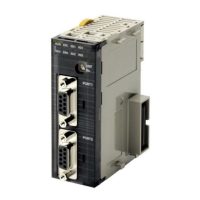
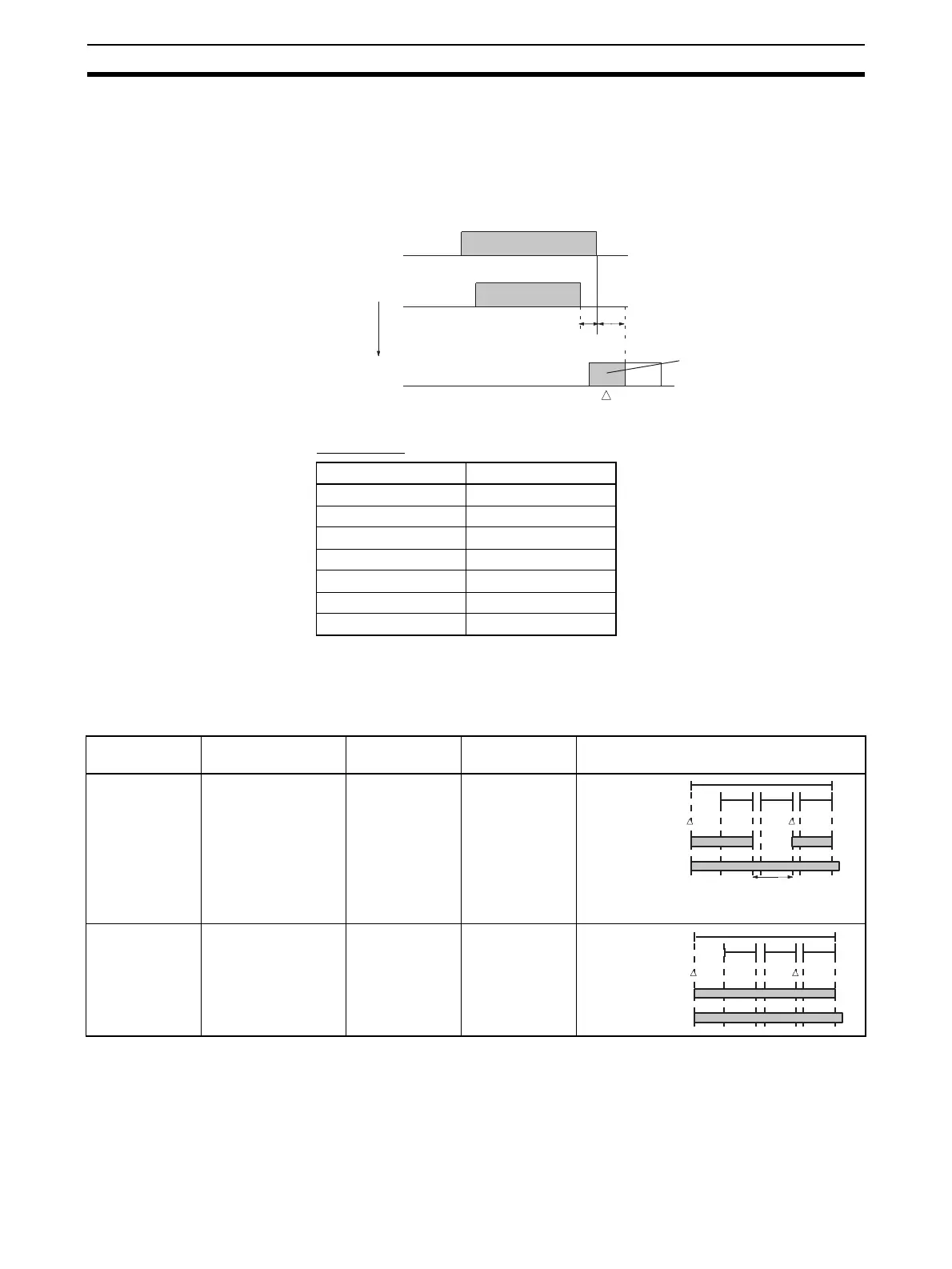